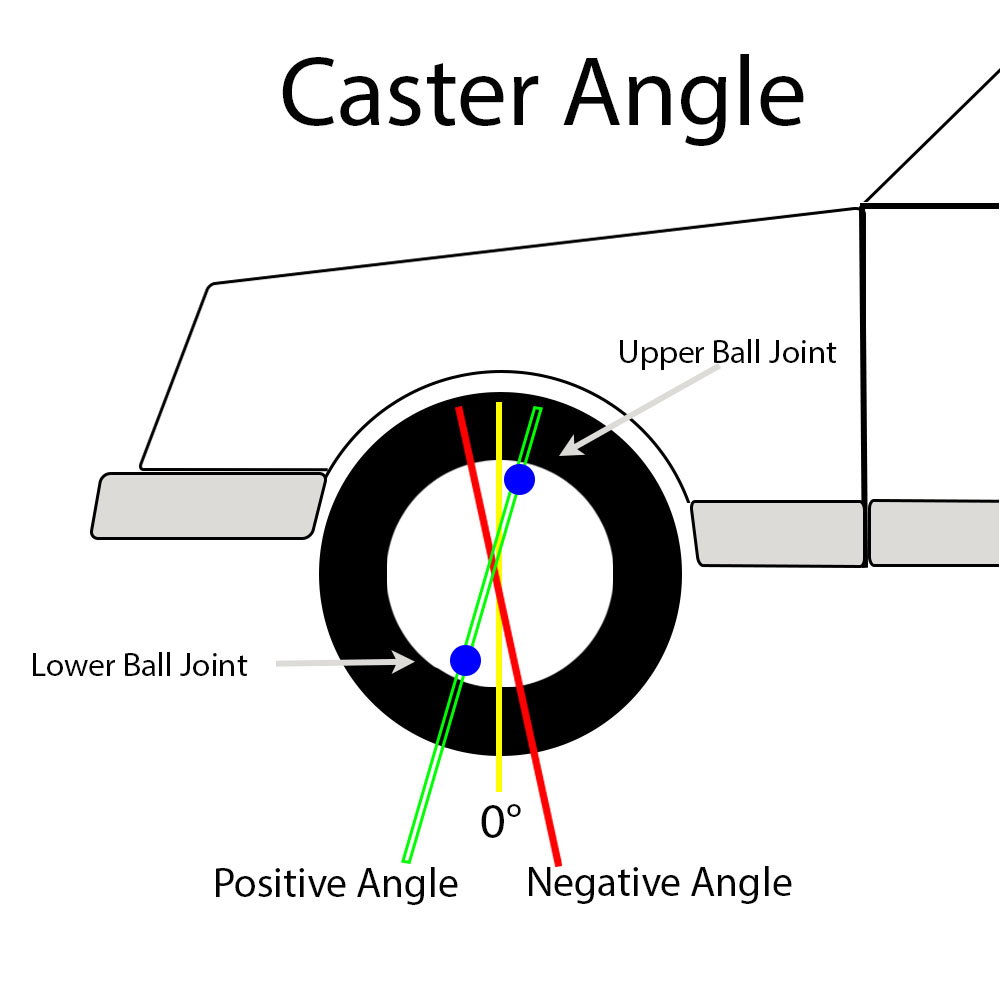The caster angle is the slope of the imaginary line that intersects the upper and lower steering pivot points, viewed from the side. (This could be the upper and lower ball joints or the lower ball joint and the strut.)

The caster angle is expressed in degrees. It can be positive or negative. A positive caster angle occurs when the upper pivot point is behind the lower point. If the upper pivot point is forward of the lower point, it creates a negative caster angle.
How is it measured and adjusted?
For accurate alignment, special equipment is required. For experienced car guys, Wheel Alignment Tools and Wheel Alignment Parts are available. For most people, however, we recommend taking your vehicle to a reputable alignment shop.
How does it affect performance?
Caster angle settings affect the following:
Steering Effort - Increasing the amount of positive caster will make turning the wheel more difficult. However, for vehicles with power steering systems, this is not really an issue.
Stability - More positive caster stabilizes the wheel at speed. It helps keep the vehicle traveling in a straight line. It also helps return the tire to an upright position when coming out of a turn.
Cornering - Positive caster increases the tire lean during a turn. When the tire leans into a turn, the vehicle corners better.

